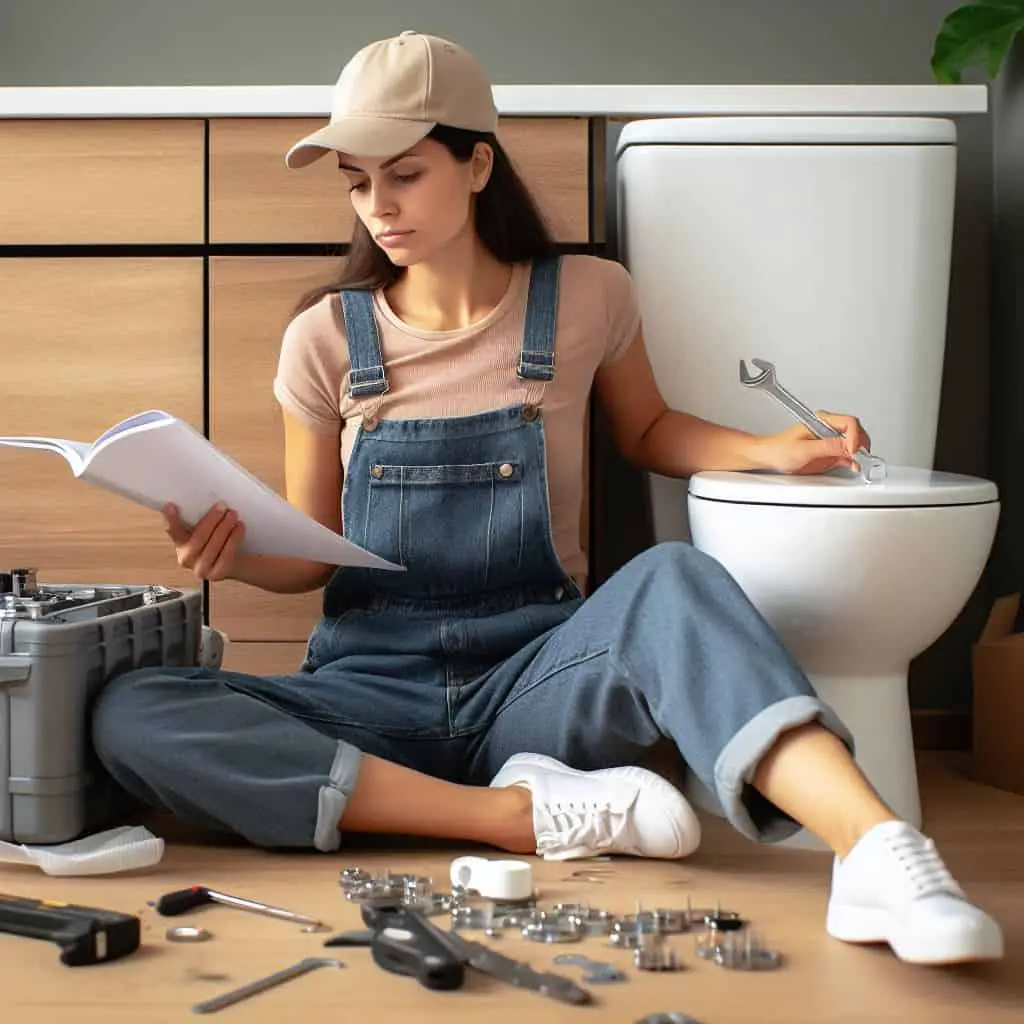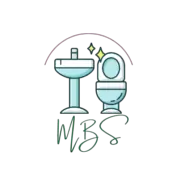Have you ever encountered the peculiar sound of hissing coming from your toilet? It’s a common enough issue, but it can certainly leave you puzzled and a bit on edge, especially when your home should be a place of peace and quiet. This hissing is more than just an auditory annoyance; it often signals that something is not quite right with your toilet’s internal mechanics.
The good news is that a hissing toilet typically isn’t a harbinger of disaster. Your toilet is most likely hissing due to a problem with the fill valve, which controls the water flow into the toilet tank, or the flapper valve, which may not be sealing properly. It could also be air being forced through a small leak in the system. These are fixable issues, and with a little bit of guidance, you’ll be able to pinpoint and soothe the source of the hiss without too much trouble.
This blog is your friendly guide through the world of toilet whispers, designed to help you diagnose and fix the issue with ease. Let’s plunge into the details and flush out the cause of that unsettling noise, so you can return to enjoying the tranquility of your home.

What Causes a Toilet to Hiss?
The hissing sound you’re hearing from your toilet is not quite the call of the wild, but it is the call of your bathroom fittings telling you something is off. Several culprits could be behind this sound, but they typically boil down to a few common issues in the toilet’s tank. Let’s unclog the mystery:
- Faulty Fill Valve: Often, the hissing sound originates from the fill valve, which is tasked with refilling the tank after a flush. If this valve is malfunctioning or its settings are out of tune, it can cause water to flow through it improperly, creating that telltale hiss as it tries (and fails) to quietly do its job.
- Imbalanced Float: Attached to the fill valve is the float, whose job is to rise with the water level and shut off the valve once full. A float that’s set too high will cause water to continuously run into the overflow tube, and you’ll hear it as a hiss.
- Leaky Flapper: The flapper forms a watertight seal at the bottom of the tank, preventing water from constantly seeping into the bowl. Over time, it can warp or decay, leading to small leaks that allow air and water to escape, creating a hissing noise.
- Worn-out Seal or Gasket: Similarly, other components in the tank can wear out and break their seal. This breakage can cause air to be pushed through the water in the tank, sounding like a hiss.
- High Water Pressure: Excessively high water pressure in your home can force water through your toilet’s inlet with too much force, leading to persistent hissing as the components struggle to handle the pressure.
When you’re dealing with a hissing toilet, the first step is narrowing down the cause. Inspecting these components one by one—starting with the more common culprits like the fill valve and the flapper—will help you spot the issue. In many cases, a simple adjustment or a part replacement is all it takes to eliminate that hissing noise and ensure your toilet runs silently and efficiently once again.
Is a Hissing Toilet a Sign of a Major Plumbing Issue?
A hissing toilet might sound like a major plumbing issue waiting to flood your peace of mind, but in reality, it’s often not as dire as it seems. Typically, the hissing sound is a symptom of a minor problem within the toilet’s internal mechanics that can be resolved without extensive plumbing knowledge. That being said, understanding whether the noise indicates something more serious is key to tackling it appropriately.
The hiss usually arises from problems such as a misaligned fill valve, a faulty flapper, or other replaceable parts inside the toilet tank. These are components that you can often inspect and remedy yourself with a few basic tools and a trip to the hardware store. The hiss is your early warning system—like a smoke alarm for potential water waste and inefficiencies in your toilet, alerting you to nip the issue in the bud before it escalates.
Ignoring the hissing, however, can lead to consequences over time. A toilet that constantly runs due to a hissing sound can hike up water bills and lead to unnecessary water waste, putting a strain on your wallet and the environment. Additionally, prolonged neglect could potentially result in wear and tear to the toilet’s internal parts, which might eventually develop into a more complicated repair job.
In rare cases, the hissing could also indicate high water pressure in your home’s plumbing, which can have wider implications for your household fixtures and necessitate professional intervention. Beyond just the toilet, excessive pressure can stress pipes and valves throughout your home, risking leaks and damage in places less visible than your bathroom.
So, while a hissing toilet is often not an omen of a catastrophic plumbing failure, it does call for your attention. The quicker you address the issue, the less chance there is of it growing into something bigger and more pricey to fix. In other words, treat the hiss less like a sinister snake lurking in your bathroom and more like a friendly reminder to check in on the working parts of your home.
How Can I Diagnose the Source of a Hissing Toilet?
Diagnosing the source of a hissing toilet is a process akin to playing detective within the confines of your bathroom. The key is to go step by step, ruling out potential causes until you isolate the issue. Here’s a systematic approach to sniffing out the source of that hiss:

- Listen closely: Before diving in, take a moment to simply listen. Can you tell if the sound is coming from inside the tank or from the supply line leading to the toilet? This initial clue can steer you in the right direction.
- Check the Water Level: Start by removing the lid of the toilet tank and taking a peek inside. The water level should be about an inch below the top of the overflow tube. If it’s too high, it could be causing water to continuously flow into the tube, creating a hissing sound.
- Inspect the Fill Valve: If the water level seems normal, focus on the fill valve. A malfunctioning fill valve, often signaled by a worn washer or gasket, can produce a hiss. Adjust the valve to ensure it shuts off properly, and notice if the hissing stops when you manually lift the float arm.
- Evaluate the Flapper and Flush Valve: Take a look at the flapper at the bottom of the tank. If it’s not forming a complete seal, it could be the source of the hiss. Press down on the flapper to see if the noise stops, suggesting a leak that’s letting air and water escape.
- Inspect for Leaks: Check for any signs of water on the floor around the toilet or near the supply line as leaks here can lead to hissing as well.
- Water Pressure Test: Finally, consider checking the water pressure in your home. If it’s consistently too high, it could be causing stress on your toilet’s internal parts, including those responsible for the hissing.
By addressing each of these areas, you should be able to uncover the issue. Remember to exercise caution when handling parts within the tank and to shut off the toilet’s water supply before making any adjustments. If the hissing persists despite your best efforts, it may be time to consult a professional plumber for a deeper investigation.
What Are the Steps to Fix a Hissing Toilet?
Fixing a hissing toilet can range from straightforward tweaks to replacing parts, depending on the root of the issue you’ve identified. Let’s walk through the steps to put an end to the hiss:
Adjust the Fill Valve and Float: If the issue is with the fill valve or float, often an adjustment is all that’s needed. For a float that’s set too high, you can try lowering it to reduce the water level. This can usually be done by turning a screw on top of the fill valve or by gently bending the float arm downward, depending on the design of your toilet.
Replace the Fill Valve: Should the fill valve be the perpetrator but refuses to be quieted by an adjustment, it might be time for a replacement. First, shut off the toilet’s water supply and drain the tank. Then, remove the old fill valve by disconnecting the water supply tube and unscrewing the valve from the tank. Install the new fill valve according to the manufacturer’s instructions, reattach the supply tube, and then turn the water back on.
Examine and Replace the Flapper: When the flapper isn’t sealing correctly, removing and replacing it is usually the fix. Again, start by turning off the water and emptying the tank. Unhook the old flapper from its seat and the chain from the flush lever. Connect the new flapper in place, and adjust the chain’s length so it’s taut when the flush lever is at rest.
Seal Gaps and Fix Leaks: If you’ve found small gaps or leaks in the tank, you might need to replace the corresponding gaskets or seals. Make sure you get replacements that match and install them snugly to prevent air from causing the hissing noise.
Address High Water Pressure: For issues with high water pressure causing the hiss, you may need to install a pressure-reducing valve in your home’s plumbing system. This is a more complex task and might require professional plumbing assistance.
Each step should resolve the hissing from a particular problem area. If you’re uncomfortable performing any of these tasks, or if the hissing continues after you’ve tried these fixes, it’s wise to call in a plumber. They can provide a thorough inspection and carry out the necessary repairs to ensure your toilet operates smoothly and silently.
When Should I Call a Professional for a Hissing Toilet?
While many hissing toilet issues can be tackled with a bit of DIY prowess, there are times when it’s best to hang up your plumber’s hat and call in a professional. Recognizing these moments can save you time, prevent further damage, and ensure your toilet gets the expert care it needs.

You should consider calling a plumber if:
- Initial Troubleshooting Fails: If you’ve gone through the basic steps—checking the water level, adjusting the float, inspecting the flapper, and possibly replacing the fill valve or other parts—yet the hissing persists, a professional eye may be needed to uncover less obvious issues.
- Complex Problems Arise: If during your inspection you encounter problems like significant leaks, cracks in the tank or bowl, or if you notice water damage around the toilet’s base, these are signs of potentially larger underlying issues that require a plumber’s attention.
- Tools and Tasks Are Beyond Your Reach: The replacement and repair steps can involve intricate knowledge and special tools. If you’re not comfortable using these tools, or if the maintenance steps leave you feeling out of depth, a professional’s skill set will be invaluable.
- High Water Pressure Concerns: Hissing due to high water pressure isn’t isolated to your toilet; it impacts your whole household’s plumbing. Managing this requires a nuanced understanding of the home’s water system, and a professional can measure pressure accurately and install necessary equipment to regulate it.
- Warranty and Insurance Considerations: DIY plumbing might void warranties on your toilet or plumbing, or go against the terms of your homeowner’s insurance. To keep these intact, or if you’re unsure about coverage implications, defer to a professional plumber.
- Multiple Plumbing Issues: If the hissing toilet isn’t the only plumbing hiccup in your home, this could indicate broader systemic problems. In this case, it’s definitely time for a comprehensive examination from a plumber.
In any of these situations, a licensed plumber not only brings expertise and the right tools but also offers peace of mind. They can diagnose problems quickly, provide durable solutions, and help avoid repeat issues. Remember, acting early and seeking professional help when needed can prevent a hissing toilet from escalating into a full-blown plumbing crisis.
Conclusion
In tackling the enigmatic question of “why is my toilet hissing?” we’ve journeyed through the common causes and outlined steps for both diagnosis and resolution.
Whether it’s a faulty fill valve, a misplaced float, a deteriorating flapper, or an issue with water pressure, understanding the source is key to restoring the peace in your bathroom. It’s essential to listen to what your toilet is telling you and to react promptly, be it through a simple fix or by calling a professional.
By addressing the hissing sound effectively, not only do you ensure a quieter home, but you also maintain the health and longevity of your plumbing system.
